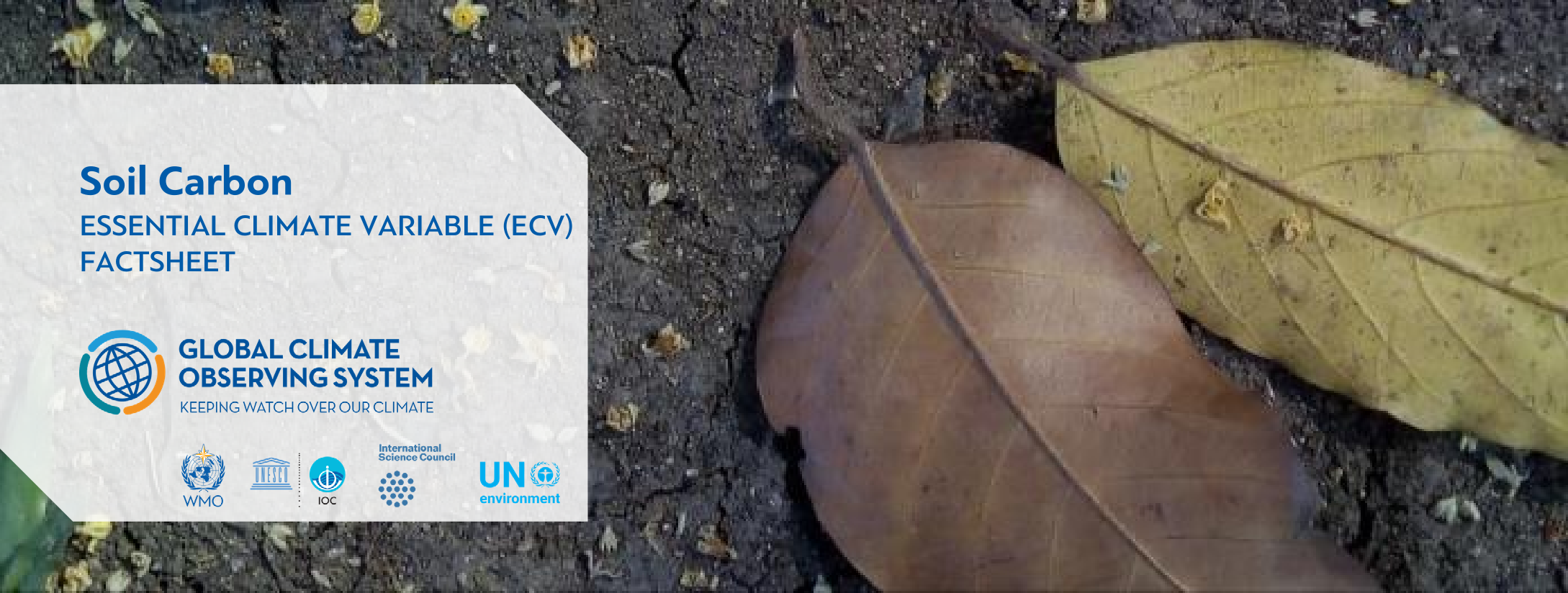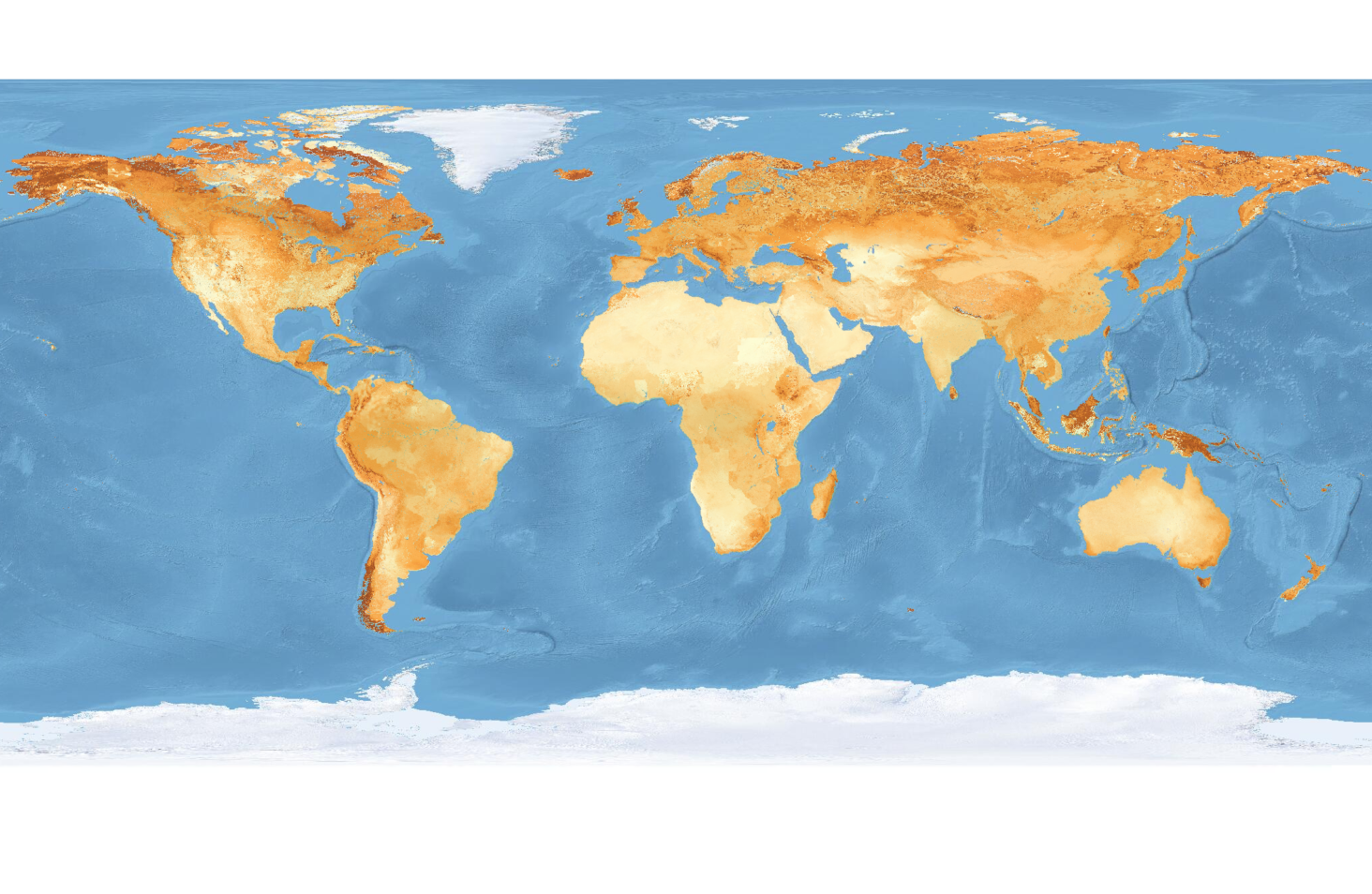
Soil Carbon
 |
Carbon in soils occurs in organic and inorganic forms. The inorganic carbon is derived from weathered bedrock, is relatively inert and constitutes little to the carbon cycle. Soil organic carbon is derived from plant and other decaying matter and is a significant part of the carbon cycle. About 10% of the atmospheric carbon cycles through soils each year. Soil organic carbon represents the largest terrestrial carbon pool, amounting to about two to three times the net size of the biomass pools. Carbon sinks may be explained by changes in above-ground biomass on seasonal to decadal timescales, but soil organic carbon stocks become significant on longer timescales, and can be a significant source at all timescales after disturbances. |
|
| Domain: | Terrestrial | |
| Subdomain: | Biology | |
| Scientific Area: | Biosphere | |
| ECV Steward: | ||
| Products: | Carbon in soil; Mineral soil bulk density to 30 cms and 1m Peatlands total depth of profile, area and location | |
Global Soil Organic Carbon Map
|
Figure: Global Soil organic Carbon Map, GLOSIS – GSOCmap ©FAO 2018, http://54.229.242.119/GSOCmap/
|
ECV Products and Requirements
These products and requirements reflect the Implementation Plan 2022 (GCOS-244).
The requirements are found in the complete 2022 ECVs Requirements document as well: ECV Soil Carbon.
| Products | Carbon in Soil | Mineral Soil Bulk Density | Peatlands | ||||
| (*) | Unit | Values | Values | Unit | Values | ||
| Horizontal Resolution | G | km | 20 | 0.1 | m | 20 | |
| B | 100 | 1 | 100 | ||||
| T | 1000 | 20 | 1000 | ||||
| Vertical Resolution | G | - | - | m | 0.1 | ||
| B | - | - | 0.5 | ||||
| T | - | - | 1 | ||||
| Temporal Resolution | G | y | 1 | 5 | y | 5 | |
| B | 5 | 10 | 10 | ||||
| T | 10 | 20 | 20 | ||||
| Timeliness | G | y | 1 | 1 | y | 1 | |
| B | 1 | 1 | 1 | ||||
| T | 1 | 1 | 1 | ||||
| Required Measurement Uncertainty (2-sigma) | G | % | 10 | 10 | % | 10 | |
| B | 10 | 10 | 10 | ||||
| T | 10 | 10 | 10 | ||||
| Stability | G | % | 1 | 1 | % | 1 | |
| B | 1 | 1 | 1 | ||||
| T | 1 | 1 | 1 | ||||
(*) Goal (G): an ideal requirement above which further improvements are not necessary. Breakthrough (B): an intermediate level between threshold and goal which, if achieved, would result in a significant improvement for the targeted application. The breakthrough value may also indicate the level at which specified uses within climate monitoring become possible. It may be appropriate to have different breakthrough values for different uses. Threshold (T): the minimum requirement to be met to ensure that data are useful.
Data Sources
This list provides sources for openly accessible data sets with worldwide coverage for which metadata is available. It is curated by the respective GCOS ECV Steward(s). The list does not claim to be complete. Anyone with a suitable dataset who wishes it to be added to this list should contact the GCOS Secretariat.
- GLOSIS – GSOCmap


